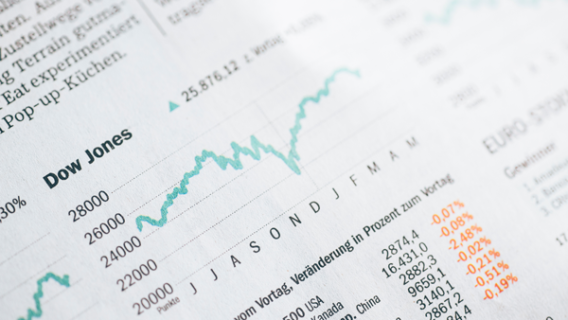Stock market corrections will always happen, but you don’t need to be a victim—invest wisely and use them to your benefit, instead!
A stock market correction is a great opportunity to buy stocks on sale. During a market correction, a major stock index suddenly plummets more than 10% from it’s most recent high. This might sound scary if you’re a new investor, but usually it’s “correcting” an imbalance and puts stock prices back on their original trajectory.
Value and long-term investors can usually wait a correction out, however day traders and growth investors looking for quicker returns often panic.
Don’t panic. Rumors of a stock market correction might cause you to worry and sell your stocks, but that’s rarely the best thing to do. Instead, tighten your loss limits, and keep your stocks on a short leash in case the market suddenly starts to head south in a hurry. But don’t start preemptively selling stocks just because a market correction seems imminent. If you do, you’re likely to miss out on even more gains in the coming days, weeks … and potentially months.




Speaking of which, if the stock market drops more than 20%, it’s no longer considered a stock market correction. It’s then considered a bear market. They are referred to as bear markets because when bears attack, they swing down, just like how the trend of the stock market swings down when prices decrease. Falling prices and growing pessimism characterize a bear market and they are usually the result of a declining economy. In addition, factors such as high unemployment and a lack of disposable income may spark a bear market.
Unlike market corrections, usually, a bear market follows a specific sequence. At first, prices are high and investors decide to capitalize on this and cash in their investments. As more and more investors follow this strategy, prices begin to decline steeply. This trend continues until the decrease in prices begins to slow and traders begin to invest again.
Buying During a Stock Market Correction
Should you buy during a stock market correction? Yes and no.
As mentioned above, you can get stocks for less during a market correction, but that doesn’t mean that everything you buy will increase in value later on. There’s an art to successfully buying low among stocks, and one key facet of that decision is sticking with stocks that fell, but didn’t plummet. In that light, look for stocks that fall 10%-15% during a stock market correction.
If you own a variety of famous stocks – Apple stock, Bristol-Myers Squibb stock, Blackstone Group, etc. – you’re going to grow your net worth over the long term, despite those pesky stock market corrections. But instead of grimacing and watching your invested capital fall during the next market correction, would you rather know of a way to profit during that correction?
Try this. Prepare for a pullback in advance so that you’re positioned to buy low during the pullback, then reap capital gains as the market naturally recovers. I’m talking about extra profit that you wouldn’t have gained if you didn’t buy low during the market pullback.
Use a stop-loss order on some of your shares (but not necessarily on all of your shares), and as the share price rises, raise the stop-loss order. When the market pulls back, those shares will sell. Set that cash aside and use it in a few weeks to “go shopping” after the stock market seems to have settled down. Having the funds to buy low when stock prices are cheap is the biggest advantage of being prepared for a stock market correction!
What else would you like to know about stock market corrections? Leave a comment below.




